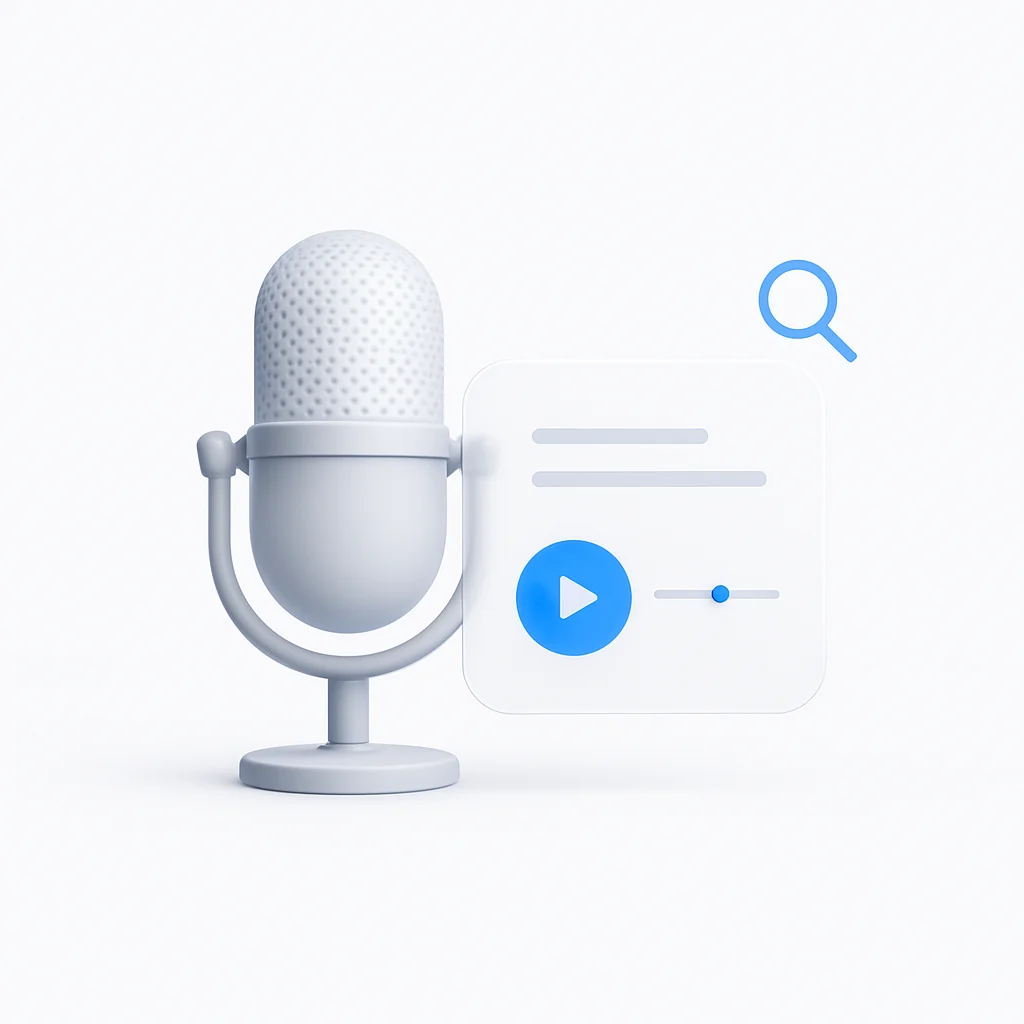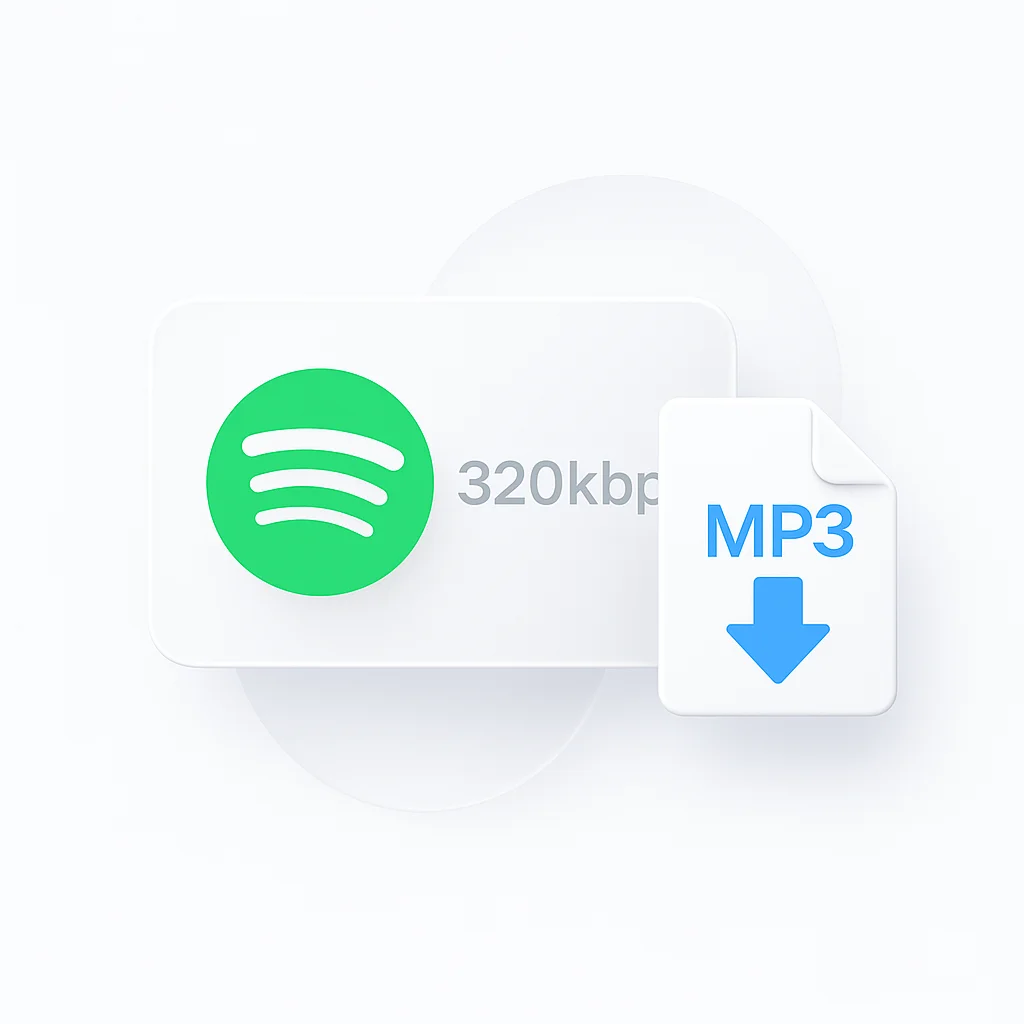時間とお金を無駄にするような、期待外れのオーディオ機器にうんざりしていませんか?もう探す必要はありません!私たちはあなたのために調査を行い、偏りのないレビューと比較を添えて、最高のオーディオマイクロフォンテスターのリストを10個まとめました。当て推量に別れを告げ、クリスタルクリアな音質にこんにちは。プロのミュージシャン、ポッドキャスター、あるいは単に素晴らしいオーディオの愛好家であっても、これらの最高級テスターは、あなたの声が大きくクリアに聞こえることを保証します。
はじめにオーディオ録音と放送の世界では、音質が最も重要です。没入感のあるクリスタルクリアな会話と、リスナーにとって不満の残る、まとまりのない体験との違いを生む可能性があります。この音質の中心にあるのは、何かがうまくいかなくなるまで見過ごされがちなデバイス、つまりマイクロフォンです。この重要な機器の一貫したパフォーマンスを保証するのが、信頼性の高いオーディオおよびマイクロフォンテスターです。信頼できるテスターを手元に置いておくことは、サウンドの明瞭さと豊かさを守るだけでなく、最終出力に影響を与える前に潜在的な問題を特定するのに役立ちます。あなたがポッドキャスター、ミュージシャン、ストリーマー、またはサウンドに大きく依存している人であれば、マイクロフォンテストツールは、完璧なオーディオへの道のりにおいて不可欠な味方となります。この記事では、現在入手可能なトップ10のマイクロフォンテストツールを厳選して紹介することで、オーディオツールキットを強化することを目的としています。各ツールは、使いやすさ、信頼性、独自の機能などのさまざまな基準を考慮して、慎重にレビューされています。したがって、あなたが始めたばかりであろうと、経験豊富なオーディオのプロフェッショナルであろうと、特定のニーズに最適なテストツールを選択するための貴重な洞察が得られるでしょう。これらのオーディオテストの宝石を詳しく掘り下げ、すべての録音で完璧なサウンドを実現するのに役立つので、ご期待ください。優れたマイクロフォンテストツールの必要性デジタルコミュニケーションが主流の時代において、マイクロフォンテストが重要になるシナリオは数え切れません。ポッドキャスターやYouTuberにとって、クリアで鮮明な音質はコンテンツの生命線であり、スタジオで録音したり、ステージでライブパフォーマンスを行ったりするミュージシャンにとっても同様です。ビジネスプロフェッショナルにとっても、バーチャルミーティング中のシームレスなオーディオを確保することで、コミュニケーションと生産性を大幅に向上させることができます。では、反対の側面を考えてみましょう。マイクロフォンをテストすることを怠るとどうなるでしょうか?重要な電話会議でプレゼンテーションの最中に、あなたの声が井戸の底から話しているように聞こえ始める可能性があります。あるいは、テストされていないマイクロフォンが、あらゆる種類のバックグラウンドノイズを拾い上げ、コンテンツを使用不能にしてしまうことに後で気づくために、ポッドキャストのエピソード全体を録音することを想像してみてください。これらは、テストが不十分なマイクロフォンから発生する可能性のある問題のほんの一例にすぎず、優れたマイクロフォンテストツールの否定できない必要性を強調しています。優れたマイクロフォンテストツールを評価するための基準適切なマイクロフォンテストツールを選択する際には、特定の基準を考慮する必要があります。 * 使いやすさ - 完璧なマイクロフォンテストツールは、ユーザーフレンドリーで直感的である必要があります。技術的な知識がほとんどないユーザーでも、ツールのインターフェースを操作し、不必要な複雑さなしにテストを実行できることが重要です。 * 信頼性 - ツールからの結果は一貫性があり、正確である必要があります。テスト結果の不整合は、不適切な調整につながる可能性があり、音質に悪影響を与える可能性があります。 * 機能 - 優れたテストツールは、包括的なテスト機能セットを提供する必要があります。これには、周波数範囲、音質、信号強度などのさまざまなオーディオ側面を測定する機能が含まれます。 * 互換性 - 最後になりましたが、互換性が重要です。ツールは、さまざまなマイクロフォンタイプ(コンデンサー、ダイナミック、リボンなど)で動作するように設計され、さまざまなシステムまたはプラットフォーム(Windows、Mac、Linuxなど)間で互換性がある必要があります。 最も優れた10個のマイクロフォンテストツールのレビュー1. Room EQ Wizard(REW)簡単な説明Room EQ Wizardは、一般的にREWとして知られており、強力なオーディオおよびマイクロフォンテストソフトウェアツールです。サウンドエンジニアやオーディオファンに人気があり、部屋とスピーカーの応答を測定および分析し、最適な音質を実現するのに役立つように設計されています。主な機能 * 周波数応答測定:REWは、マイクロフォンの周波数応答の詳細な分析を提供し、音質に影響を与える可能性のある潜在的なピークまたはディップを特定できます。 * インパルス応答測定:リアルタイムでのオーディオ出力の品質を判断するのに役立ちます。 * 部屋の音響分析:REWは、最適なオーディオ録音または再生のために部屋の音響を分析および調整するのに役立ちます。 * キャリブレーション:正確なサウンド測定を保証するために、オーディオデバイスのキャリブレーションをサポートします。 * イコライゼーションの推奨事項:分析に基づいて、REWは最適なイコライゼーション設定の提案を提供します。 長所 * REWは、オーディオ分析のための包括的なツールスイートを提供し、すべてのマイクロフォンテストニーズに対応するワンストップショップとなっています。 * 高度な機能を備えているにもかかわらず、初心者でも操作できるユーザーフレンドリーなインターフェースを維持しています。 * 無料で使用できるため、予算が限られている個人にとって優れた選択肢です。 短所 * その多くの機能は、オーディオテストを初めて行う人にとっては圧倒される可能性があります。 * 最も正確な結果を得るには、外部測定マイクロフォンが必要です。 * 技術に詳しくない人にとって、提示されたすべての技術データを理解するのは難しい場合があります。 2. Mitch BarnettによるDSPを使用した正確なサウンド再生簡単な説明「Mitch BarnettによるDSPを使用した正確なサウンド再生」は、典型的なテストツールではなく、Mitch Barnettによって書かれた包括的なガイドです。この本では、正確なサウンド再生を実現するためにデジタル信号処理(DSP)を使用するという概念を探求しています。マイクロフォンを直接テストするわけではありませんが、読者に最適なマイクロフォンパフォーマンスのためにサウンドシステムを最適化するための貴重な洞察と理解を提供します。主な機能 * DSPの詳細な調査:この本では、デジタル信号処理をサウンド再生で使用する方法について詳しく解説しています。 * DSPの適用:Barnettは、DSPがスピーカー、ヘッドフォン、部屋の音響のパフォーマンスをどのように向上させることができるかについて説明しています。 * ステップバイステップガイド:この本には、DSPの概念をオーディオセットアップに適用するための実用的でステップバイステップのガイドが含まれています。 長所 * この本は、複雑な概念を理解しやすい言語に分解し、初心者がアクセスできるようにしています。 * 「DSPを使用した正確なサウンド再生」は、オーディオシステムの強化に関心のある人にとって包括的な情報源です。 * 実用的なヒントとステップバイステップのガイドは、読者が理論的な知識を現実世界のオーディオセットアップに適用するのに役立ちます。 短所 * 本であるため、ソフトウェアツールのような直接的で実用的なテスト機能は提供していません。 * 読んだり理解したりするのに時間がかかる場合があり、迅速なテストソリューションを探しているユーザーには適していない可能性があります。 * この本は、全体的なサウンドシステムと部屋の音響に重点を置いており、マイクロフォンのみに焦点を当てていません。「DSPを使用した正確なサウンド再生」は、DSPを使用してオーディオシステムを改善するための詳細な調査を提供します。直接的なマイクロフォンテストツールではありませんが、その概念は、全体的なサウンド再生のコンテキスト内でマイクロフォンパフォーマンスを最適化するために利用できます。3. SpectraPLUS-SCオーディオスペクトラムアナライザー簡単な説明SpectraPLUS-SCは、オーディオ出力の詳細なスペクトル分析を実行する高度なソフトウェアツールです。オーディオ環境の細部を掘り下げ、最適な音質を得るために正確な調整を行いたい人にとって、非常に貴重なツールです。主な機能 * リアルタイム分析:SpectraPLUS-SCは、オーディオスペクトルに関するリアルタイムの更新を提供し、問題の即時特定と修正を可能にします。 * 幅広いテスト範囲:高速フーリエ変換(FFT)分析、周波数応答、ノイズレベル、歪み測定など、幅広いテストを提供します。 * 高度なフィルター:ソフトウェアには複数のフィルターオプションが付属しており、特定の周波数の詳細な分離と分析が可能です。 * 録音と再生:入力信号の録音とその後の詳細な分析のための再生をサポートします。 長所 * SpectraPLUS-SCは、オーディオ品質の包括的な概要を提供する幅広い詳細な分析ツールを提供します。 * オーディオ周波数範囲内の特定の問題を特定して修正するための優れたツールです。 * 情報が満載ですが、そのユーザーインターフェースは整理されており、ある程度の技術的知識を持つユーザーにとっては比較的簡単に操作できます。 短所 * その複雑な機能のために、このソフトウェアは初心者にとっては圧倒される可能性があります。 * プレミアムツールであり、予算が限られている人にとっては費用がかかる可能性があります。 * その機能を最大限に活用するには、ある程度の技術的知識が必要です。 4. Voxengo Span Plus簡単な説明Voxengo Span Plusは、プロフェッショナルなオーディオおよび音楽制作アプリケーション向けのプレミアムなリアルタイム「高速フーリエ変換」オーディオスペクトラムアナライザープラグインです。詳細な周波数分析を提供し、その柔軟性と明瞭さで高く評価されています。主な機能 * 詳細なスペクトル分析:Voxengo Span Plusは、リアルタイムで詳細な視覚スペクトル分析を提供し、ユーザーが周波数の不均衡または特定のオーディオ問題を特定するのに役立ちます。 * 柔軟な表示モード:このツールは、スペクトル、スペクトログラム、位相相関メーターなど、周波数スペクトルを視覚化するための複数の表示モードを提供します。 * 出力分析:調整可能なバリスティクスと積分時間を使用した出力レベルメーターをサポートし、出力サウンドの詳細な概要を提供します。 長所 * Voxengo Span Plusは、さまざまなユーザーの好みに合わせて、オーディオ分析用の詳細で多用途な機能スイートを提供します。 * デジタルオーディオワークステーション(DAW)のプラグインとして使用できるため、音楽制作に便利なツールです。 * 正確でクリアな視覚化で知られており、ユーザーがデータを解釈しやすくなっています。 短所 * プレミアムツールであるため、Voxengo Span Plusは一部のユーザーにとっては予算外である可能性があります。 * 基本的なマイクロフォンテスト機能を必要とする人にとっては過剰な場合があります。 * 一部の初心者にとって、幅広い機能と表示モードは圧倒される可能性があります。5. Fluke Networks AirMagnet WiFi Analyzer簡単な説明Fluke Networks AirMagnet WiFi Analyzerは、ワイヤレスネットワークアナライザーであり、直接的なマイクロフォンテストツールではありませんが、ワイヤレスマイクロフォンのパフォーマンスを妨げる可能性のあるWiFiの問題を特定するのに役立ちます。主な機能 * WiFi干渉検出:アナライザーは、ワイヤレスマイクロフォンのパフォーマンスに影響を与える可能性のあるWiFi干渉を特定し、修正するのに役立ちます。 * ネットワークパフォーマンス分析:ネットワークパフォーマンスに関する詳細なメトリクスを提供し、ユーザーがより良いオーディオストリーミングのためにネットワークを最適化するのに役立ちます。 * セキュリティの脅威の特定:ツールは、ネットワークに対する潜在的なセキュリティの脅威を特定し、間接的にスムーズなマイクロフォンの使用を保証できます。 長所 * ワイヤレスマイクロフォンにとって重要なWiFiパフォーマンスの包括的な概要を提供します。 * アナライザーのユーザーフレンドリーなインターフェースは、ネットワーク最適化のプロセスを簡素化します。 * 潜在的なネットワークセキュリティの脅威を特定し、システム全体の安全性を高めることができます。 短所 * 専用のマイクロフォンテストツールではないため、有線マイクロフォンテストまたは特定のオーディオ品質の側面には役立ちません。 * 基本的なマイクロフォンテスト機能のみを必要とする人にとっては価格が高い可能性があります。 * ネットワークメトリクスを解釈し、必要な調整を行うには、ある程度の技術的知識が必要になる場合があります。 6. Audio-Technica ATR2100-USBカーディオイドダイナミックUSB / XLRマイクロフォン簡単な説明Audio-Technica ATR2100-USBは、USBとXLRの両方の出力を提供する多用途でポータブルなマイクロフォンです。この機能により、デジタルおよびアナログオーディオ録音の両方に適しており、幅広いユーザーに対応します。主な機能 * USBおよびXLR出力:マイクロフォンはUSBとXLRの両方の出力を提供し、柔軟な使用が可能です。 * カーディオイドポーラーパターン:カーディオイドパターンは、側面と背面からの不要なサウンドの拾いを軽減します。 * 高品質の構造:マイクロフォンは頑丈な構造品質を誇り、耐久性を約束します。 長所 * デュアル出力機能により、マイクロフォンを幅広い設定で使用できます。 * 特に音声録音アプリケーションで、高品質のサウンドを提供します。 * マイクロフォンの堅牢な構造により、長持ちする耐久性が保証されます。 短所 * 内蔵オーディオインターフェースが付属していないため、一部のユーザーにとっては不便な場合があります。 * 一般的にはうまく機能しますが、スタジオグレードの録音品質を求めているユーザーのニーズを満たさない場合があります。 * 一部のユーザーは、マイクロフォンの重量が手持ちで使用するには少し重いと感じる場合があります。 7. オンラインマイクロフォンテスト簡単な説明オンラインマイクロフォンテストは、追加のソフトウェアをインストールせずに、ブラウザーで直接マイクロフォンをテストするための迅速かつ簡単な方法を提供する、無料のWebベースのツールです。主な機能 * ユーザーフレンドリーなインターフェース:このツールは、ボタンをクリックしてマイクロフォンテストを開始するだけの簡単なインターフェースを提供します。 * インストール不要:Webベースであるため、ソフトウェアやプラグインをインストールする必要はありません。 * 互換性:Windows、MacOS、モバイルデバイスなど、Webブラウザーを備えたあらゆるデバイスと互換性があります。 長所 * そのシンプルさと使いやすさにより、あらゆる技術スキルレベルのユーザーがアクセスできます。 * Webベースであるため、インターネット接続があるあらゆるデバイスでアクセスして使用できます。 * 無料で使用できます。 短所 * このツールは、基本的なマイクロフォンテスト機能のみを提供し、高度な機能は提供していません。 * 詳細なプロフェッショナルオーディオ分析には適していない場合があります。 * テストの精度は、使用されるブラウザーまたはデバイスの影響を受ける可能性があります。 8. Rode NT-USBミニマイクロフォン簡単な説明Rode NT-USB Miniは、コンピューターまたはタブレットに直接録音するように設計された、コンパクトなスタジオ品質のUSBマイクロフォンです。主な機能 * 高音質:このマイクロフォンは、クリアでプロフェッショナルなサウンドで知られています。 * コンパクトでポータブル:その小さいサイズと頑丈な構造により、非常にポータブルです。 * プラグアンドプレイ:追加のドライバーは不要です。デバイスに接続するとすぐに使用できます。 長所 * ポッドキャスティングから音楽録音まで、さまざまな用途に適した高品質のサウンドを提供します。 * コンパクトなデザインにより、ポータブルな録音ソリューションが必要なユーザーに最適です。 * 使いやすく、初心者にも適しています。 短所 * 一部のプロフェッショナルユーザーが必要とする可能性のある高度な機能がありません。 * マイクは大量のバックグラウンドノイズを拾います。 * そのUSB接続は、特定の録音環境には適していない可能性があることを意味します。 9. Shure SM58カーディオイドダイナミックボーカルマイクロフォン簡単な説明Shure SM58は、その耐久性と音質で知られるカーディオイドポーラーパターンを備えた業界標準のダイナミックボーカルマイクロフォンです。主な機能 * 音質:SM58は、その暖かくクリアなボーカル再生で知られています。 * 耐久性:非常に耐久性があり、ツアーの厳しさに耐えることができます。 * カーディオイドパターン:正面からのサウンドを最も多く拾い、側面と背面からのサウンドを少なく拾い、バックグラウンドノイズを最小限に抑えます。 長所 * その音質で有名であり、世界中のライブパフォーマーの間で人気があります。 * SM58の堅牢な構造により、過酷な条件にも対応できます。 * プロフェッショナルグレードの品質を考えると、比較的安価です。 短所 * コンデンサーマイクロフォンが優れた音質を提供する可能性があるスタジオ録音には最適ではない場合があります。 * マイクロフォンの重量は、一部のユーザーにとっては少し重い場合があります。 * XLR接続が必要であり、すべてのユーザーに適しているとは限りません。 10. Steinberg WaveLab Pro簡単な説明Steinberg WaveLab Proは、プロフェッショナルなサウンド制作のための高度なツールのスイートを提供するオーディオ編集、マスタリング、および分析ソフトウェアです。主な機能 * 高度な編集とマスタリング:WaveLab Proは、オーディオ編集とマスタリングのための包括的なツール範囲を提供します。 * 詳細な分析:スペクトル分析、メーター、位相相関ツールなど、詳細なオーディオ分析ツールを提供します。 * さまざまな形式のサポート:ソフトウェアは、幅広いオーディオ形式とサンプルレートをサポートしています。 長所 * オーディオ制作のための包括的なツールスイートを提供し、多くのユーザーにとってワンストップソリューションとなっています。 * その高度な分析ツールは、オーディオファイルに関する詳細な洞察を提供します。 * 幅広いオーディオ形式をサポートし、柔軟性を高めています。 短所 * WaveLab Proはプレミアムソフトウェアであり、一部のユーザーにとっては価格が高すぎる可能性があります。 * 特に初心者にとっては、学習曲線が急です。 * ソフトウェアは、最適な動作のために強力なコンピューターが必要です。オーディオおよびマイクロフォンテスターのすべてのツールを使用した比較表ツール簡単な説明主な機能長所短所Room EQ Wizard(REW)オーディオ分析用のソフトウェアツール詳細な視覚化、周波数応答測定、位相応答測定高精度、包括的な機能学習曲線が必要Mitch BarnettによるDSPを使用した正確なサウンド再生DSPを使用したサウンドシステムを最適化するためのガイド詳細な情報、DSPの原則の説明オーディオの最適化、教育に役立つ実践的なテストツールではないSpectraPLUS-SCオーディオスペクトラムアナライザーオーディオスペクトル分析用のソフトウェア高解像度のリアルタイム分析、広範なファイルサポート詳細かつ正確、幅広いオーディオ形式をサポート初心者にとっては圧倒される可能性ありVoxengo Span Plusオーディオスペクトラム分析プラグインリアルタイムスペクトラム分析、出力スペクトラム分析複数の表示モード、柔軟性他のオーディオソフトウェアが必要Fluke Networks AirMagnet WiFi Analyzerオーディオ用のワイヤレスネットワークを最適化するためのツールWiFiの問題を特定して修正、詳細なレポートワイヤレスマイクロフォンセットアップに役立つWiFiベースのオーディオにのみ役立つAudio-Technica ATR2100-USBマイクロフォンUSB / XLRマイクロフォンデュアルUSB / XLR出力、高音質多用途、耐久性バックグラウンドノイズを拾うオンラインマイクロフォンテストWebベースのマイクロフォンテストツール迅速かつ簡単なマイクロフォンテストインストール不要、ユーザーフレンドリー基本的な機能、詳細な分析には不向きRode NT-USB MiniマイクロフォンコンパクトなUSBマイクロフォン高音質、使いやすいコンパクトでポータブル、プラグアンドプレイバックグラウンドノイズを拾うShure SM58カーディオイドダイナミックボーカルマイクロフォンプロフェッショナルグレードのダイナミックマイクロフォン優れた音質、耐久性業界標準、信頼性XLR接続が必要Steinberg WaveLab Proオーディオ編集、マスタリング、および分析ソフトウェア高度な編集ツール、詳細な分析、広範な形式サポート包括的、詳細な洞察プレミアム価格、急な学習曲線10個のマイクロフォンテストツールの比較これらのツールはすべて、オーディオ品質の向上という広範な目的を果たしていますが、異なる機能を提供し、さまざまなユースケースに適しています。類似点:* これらのツールのほとんどは、マイクロフォンテストと分析を直接行うか、高品質の録音機器を提供することで間接的に行うかにかかわらず、オーディオ品質の向上を目的としています。それらはすべて使いやすさに重点を置いており、直感的なインターフェースを提供し、初心者からプロまで、幅広いユーザーに対応しています。相違点:* 主な違いは、その特定の機能にあります。REW、SpectraPLUS-SC、Voxengo Span Plus、Steinberg WaveLab Proは、詳細なオーディオ分析を提供するソフトウェアツールであり、それぞれが独自の機能をもたらします。一方、AirMagnet WiFi Analyzerは、特にワイヤレスマイクロフォンにとって有用な、より優れたオーディオストリーミングのためにワイヤレスネットワークの最適化に焦点を当てています。ATR2100-USB、Rode NT-USB Mini、Shure SM58は、その音質と耐久性で知られる物理的なマイクロフォンであり、それぞれが異なる録音環境に適しています。オンラインマイクロフォンテストは、マイクロフォンをテストするための基本的で迅速かつ簡単にアクセスできるツールを提供し、「DSPを使用した正確なサウンド再生」は、デジタル信号処理を使用してサウンドシステムを最適化する方法について深い理解を提供します。最も適しているもの:* REW、SpectraPLUS-SC、Voxengo Span Plus、Steinberg WaveLab Proのようなツールは、詳細なオーディオ分析を必要とするサウンドエンジニアやオーディオプロフェッショナルにとって最も有益です。* AirMagnet WiFi Analyzerは、ワイヤレスマイクロフォンに依存しているユーザーにとって最も価値があります。* ATR2100-USB、Rode NT-USB Mini、Shure SM58は、その品質と耐久性から、ポッドキャスター、ストリーマー、ライブパフォーマーにとって理想的です。* オンラインマイクロフォンテストは、基本的なマイクロフォンチェックを必要とする人に適した、迅速かつ簡単なツールです。* 「DSPを使用した正確なサウンド再生」は、サウンドシステムとその最適化方法についての理解を深めたい人にとって貴重なリソースです。マイクロフォンテストツールの使用方法マイクロフォンテストツールの使用には、通常、次の手順が含まれます。* セットアップ:マイクロフォンをデバイスに接続します。ソフトウェアを使用する場合は、正しくインストールされていることを確認してください。オンラインツールを使用する場合は、Webサイトをブラウザーで開きます。* テストの選択:ほとんどのテストツールは、さまざまなテストを提供しています。周波数応答、ノイズレベルなど、ニーズに最も関連性の高いものを選択してください。* テストの実行:ツールの指示に従って、テストを実行します。これには、マイクロフォンに話したり、サウンドを再生したりすることが含まれることがよくあります。* 結果の分析:テスト後、ツールは結果を表示します。これは、視覚的なグラフ、数値、またはオーディオ再生の形式で表示される可能性があります。これらの結果を分析して、マイクロフォンのパフォーマンスを理解してください。* 調整:結果に基づいて、マイクロフォンの設定または環境を調整して、パフォーマンスを向上させる必要がある場合があります。* 再テスト:調整後、テストを再実行して、改善が見られたかどうかを確認します。このガイドは、一般的な概要を提供します。特定の手順は、使用されているツールと実行されているテストの種類によって異なる場合があります。最適な結果を得るには、各ツールに付属の特定の指示を常に参照してください。マイクロフォンテストツールを使用したケーススタディオーディオテクニカATR2100-USBマイクロフォンを使用したポッドキャスティング:人気のポッドキャスト「Tech Stuff」は、エピソードにATR2100-USBを使用していると述べています。優れた音質と使いやすさにより、マイクロフォンは、リスナーが評価するポッドキャストの鮮明でクリアなオーディオに大きく貢献しています。そのUSB接続により、すばやく簡単にセットアップできるため、ペースの速いポッドキャスティングの世界に最適です。 * Shure SM58を使用したライブパフォーマンス:伝説的なローリングストーンズは、ライブパフォーマンス中にShure SM58マイクロフォンを使用したと伝えられています。その堅牢さと信頼性で知られるこれらのマイクロフォンは、ライブコンサートの厳しい条件に耐え、それでも優れたサウンドを提供できます。 * REWを使用したホームスタジオ録音:あるインディペンデントミュージシャンが、Room EQ Wizardを使用してホームレコーディングスタジオを最適化したことについて、オンラインフォーラムで経験を共有しました。ソフトウェアの詳細な分析機能を使用することにより、部屋の音響の問題を特定し、必要な調整を行うことができました。これにより、録音された音質が大幅に向上しました。専門家の意見とレビュー * SpectraPLUS-SC:オーディオエンジニアでありYouTuberのマイク・ラッセルは、その詳細なリアルタイムオーディオ分析のためにSpectraPLUS-SCを推奨しています。ただし、その複雑さは初心者にとっては威圧的になる可能性があると指摘しています。 * Voxengo Span Plus:サウンドエンジニアであり作家のボビー・オウシンスキーは、彼の著書「The Mastering Engineer’s Handbook: The Audio Mastering Handbook」でVoxengo Span Plusを紹介しました。その正確な視覚化と表示モードの範囲を称賛していますが、その無数の機能は初心者を圧倒する可能性があると注意しています。 * Steinberg WaveLab Pro:音楽テクノロジーのニュースとレビューで有名なプラットフォームであるMusicTechは、Steinberg WaveLab Proに対して肯定的なレビューを行いました。包括的なオーディオ編集およびマスタリングツールのスイートを強調しました。ただし、ソフトウェアの完全なメリットを得るには、オーディオマスタリングを初めて行うユーザーにとって、やや急な学習曲線が必要になることを指摘しました。マイクロフォンテストの背後にある科学マイクロフォンテストを理解するための重要な部分は、サウンドエンジニアリングのいくつかの基本的な原則を理解することです。それらのいくつかを見てみましょう。* 周波数応答:これは、異なる周波数にわたるマイクロフォンの感度を指します。理想的には、マイクロフォンは均一な周波数応答を持っている必要があります。つまり、低周波数、中周波数、高周波数を同様にうまくキャプチャする必要があります。周波数応答グラフは、この理想的な応答からのずれを特定するのに役立ちます。* ゲインレベル:ゲインとは、オーディオ信号の増幅を指します。ゲインレベルを正しく設定することが重要です。低すぎると、サウンドが静かになり、バックグラウンドノイズに埋もれてしまう可能性があります。高すぎると、サウンドが歪む可能性があります。* ノイズフロア:ノイズフロアとは、メインオーディオ信号がない場合のバックグラウンドノイズのレベルです。ノイズフロアが低いほど、バックグラウンドノイズが少なくなり、よりクリーンな録音になります。異なるツールは、これらの側面にさまざまな方法でアプローチします。たとえば、REW、Voxengo Span Plus、SpectraPLUS-SCのようなツールは、周波数応答の詳細な視覚化を提供し、ユーザーが最適なサウンドのためにゲインレベルを調整できるようにします。Shure SM58のような他のツールは、ノイズフロアを最小限に抑えるための組み込み機能で設計されています。マイクロフォンテストツールの将来テクノロジーが進化するにつれて、マイクロフォンテストツールの分野も進化します。ここにいくつかの新しいトレンドがあります。* AIベースのツール:人工知能(AI)は、オーディオテストの分野でその足跡を残し始めています。AIは、大量のデータから学習することにより、多くのテストプロセスを自動化し、より正確な結果を提供できる可能性があります。* クラウドベースのテストツール:クラウドテクノロジーの採用が増えるにつれて、より多くのクラウドベースのオーディオテストツールが見られる可能性があります。これらのツールは、インターネット接続がある場所からでもツールやデータにアクセスできるため、利便性を高めることができます。* 統合オーディオ分析システム:将来は、複数のテスト機能を単一の統合ソリューションに組み合わせたシステムが登場する可能性があります。これにより、オーディオテストプロセスが簡素化され、オーディオ環境のより全体的なビューが提供される可能性があります。これらの進歩は、マイクロフォンテストをよりアクセスしやすく、正確で、便利にする可能性を秘めています。これらの革新がサウンドの操作方法を大幅に向上させる可能性があるため、オーディオ制作に関わる人にとってはエキサイティングな時期です。マイクロフォンテストツールのカスタマイズマイクロフォンテストツールの使用を最適化するには、マイクロフォンの種類または録音環境に基づいて設定をパーソナライズすることが不可欠です。* マイクロフォンの理解:異なるマイクロフォンには、異なる長所と短所があります。たとえば、コンデンサーマイクロフォンはより感度が高く正確な傾向があり、ダイナミックマイクロフォンはより耐久性があり、湿気に耐性があります。* 環境の把握:テスト設定では、録音環境の特殊性を考慮する必要があります。たとえば、リバーブが多い部屋にいる場合は、指向性マイクロフォンを使用するか、吸音パネルを追加して音質を向上させることをお勧めします。* プリセットの利用:多くのテストツールは、一般的なシナリオのプリセットを提供しています。これらは良い出発点となり、特定の状況に合わせて調整できます。安全対策とトラブルシューティングマイクロフォンをテストする際、サウンドが拾われない、またはサウンドが歪むなど、一般的な問題が発生する可能性があります。これらの問題のトラブルシューティング方法を次に示します。* サウンドなし:マイクロフォンが適切に接続されていること、および接続先のデバイスがマイクロフォンを認識していることを確認してください。また、マイクロフォンの設定を確認して、ミュートされていないことを確認してください。* 歪んだサウンド:これは、ゲインレベルが高すぎるために発生する可能性があります。ゲインを下げて、音質が向上するかどうかを試してください。安全対策として、テスト中にハードウェアの損傷を防ぐために、マイクロフォンと関連機器は常に注意して取り扱ってください。それらを湿気、高温、または物理的な衝撃にさらさないでください。サウンド品質に対するマイクロフォンテストの影響マイクロフォンテストは、最適なサウンド品質を実現するために不可欠です。不均衡な周波数応答や過剰なバックグラウンドノイズなどの問題を特定して対処することで、オーディオ出力の品質を大幅に向上させることができます。定期的なテストは、特にオーディオ業界のプロフェッショナルにとって重要です。スタジオで音楽を録音する場合でも、ライブイベントを放送する場合でも、ポッドキャストをストリーミングする場合でも、一貫した高品質のサウンドを維持することは、聴衆を惹きつけるために重要です。定期的なテストにより、潜在的な問題が発生した場合に、オーディオ出力に悪影響を与える前に早期に発見して修正できます。結論デジタルコミュニケーションとコンテンツ制作の活気ある風景では、サウンド品質の力は過小評価できません。この記事を通して、私たちはさまざまなマイクロフォンテストツールを探求してきました。それぞれが独自の強み、機能、理想的なユースケースを備えています。私たちは、複雑な詳細を必要とする人々に包括的なオーディオ分析を提供するRoom EQ Wizard(REW)やSteinberg WaveLab Proのようなソフトウェアツールを見てきました。一方、私たちはその音質と耐久性で有名な、Shure SM58やAudio-Technica ATR2100-USBマイクロフォンのようなハードウェアに出会いました。また、マイクロフォンをすばやくチェックするためのシンプルでありながら効果的な方法を提供する、オンラインマイクロフォンテストのようなオンラインツールも発見しました。さらに、周波数応答、ゲインレベル、ノイズフロアなどの重要な概念を認識し、マイクロフォンテストの背後にある科学を掘り下げました。また、AIベースおよびクラウドベースのツールがこの分野のさらなる進歩の舞台を設定している、マイクロフォンテストツールの未来も垣間見ました。結局のところ、「最高の」マイクロフォンテストツールは、特定のニーズ、予算、技術スキルレベルに応じて、大きく主観的になります。ただし、この記事の知識を武器に、オーディオ品質を高め、コンテンツ制作を新たな高みへと引き上げることができる情報に基づいた選択を行う準備ができました。オーディオの世界では、すべての詳細が重要であり、適切なツールを使用することで、すべての詳細が確実に聞こえるようにすることができます。オーディオおよびマイクロフォンテスター関連のFAQ






